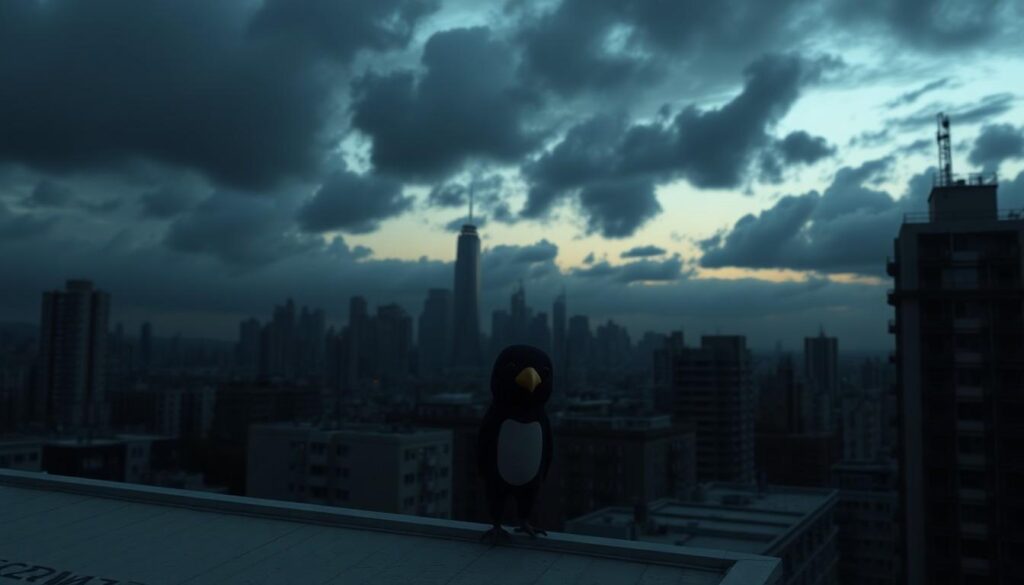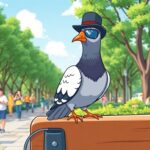Looking for the perfect way to express complex emotions online? The “PunPun face” has become an iconic symbol in internet culture, representing a range of feelings from existential dread to quiet contemplation.
We’ve seen this distinctive face from Inio Asano’s manga “Goodnight PunPun” transform into a versatile reaction image across social media platforms. Its simple yet expressive design—often just a bird-like outline with minimal features—has resonated with millions who find traditional emojis insufficient for conveying the nuances of modern communication.
The Enigmatic Appeal of Punpun’s Faceless Appearance in “Goodnight Punpun”
Punpun’s bird-like representation stands as one of the most distinctive artistic choices in manga history. Creator Inio Asano deliberately designed the protagonist as a simplistic bird symbol among realistic human characters, creating an immediate visual contrast that captivates readers. This stark juxtaposition serves multiple narrative purposes that elevate the storytelling far beyond conventional manga techniques.
The simplistic bird design functions as a brilliant narrative device allowing readers to project their own emotions onto Punpun. Many fans report feeling a deeper connection to the character precisely because his face doesn’t show explicit emotions, forcing readers to interpret his feelings through context and dialogue. The blank canvas of Punpun’s appearance creates a universal vessel that readers can fill with their own experiences of alienation and existential uncertainty.
Asano’s artistic choice also perfectly embodies the theme of disconnection that permeates the entire manga. Punpun’s inability to visually express emotions mirrors his struggle to connect with others throughout the story. His bird form evolves subtly as the narrative progresses, with variations appearing during particularly traumatic or groundbreaking moments in his life. These visual shifts serve as powerful metaphors for his psychological states without requiring explicit explanation.
The faceless design brilliantly conveys Punpun’s feelings of being an outsider in human society. As readers follow his journey through depression, love, and existential crisis, the unchanging bird face against increasingly complex and often disturbing backgrounds creates a powerful visual metaphor for maintaining a facade while experiencing internal turmoil. This resonates particularly with audiences who feel alienated by modern society’s expectations.
Among manga enthusiasts, Punpun’s design has sparked many analytical discussions about representation and symbolism in visual storytelling. Critics have praised Asano’s approach as revolutionary, noting how it challenges readers to engage more deeply with the text rather than passively consuming images. The bird representation becomes increasingly meaningful as readers advance through the narrative, revealing layers of complexity beneath its simple appearance.
Understanding Punpun’s Bird Form: Why Creator Inio Asano Chose This Unique Design
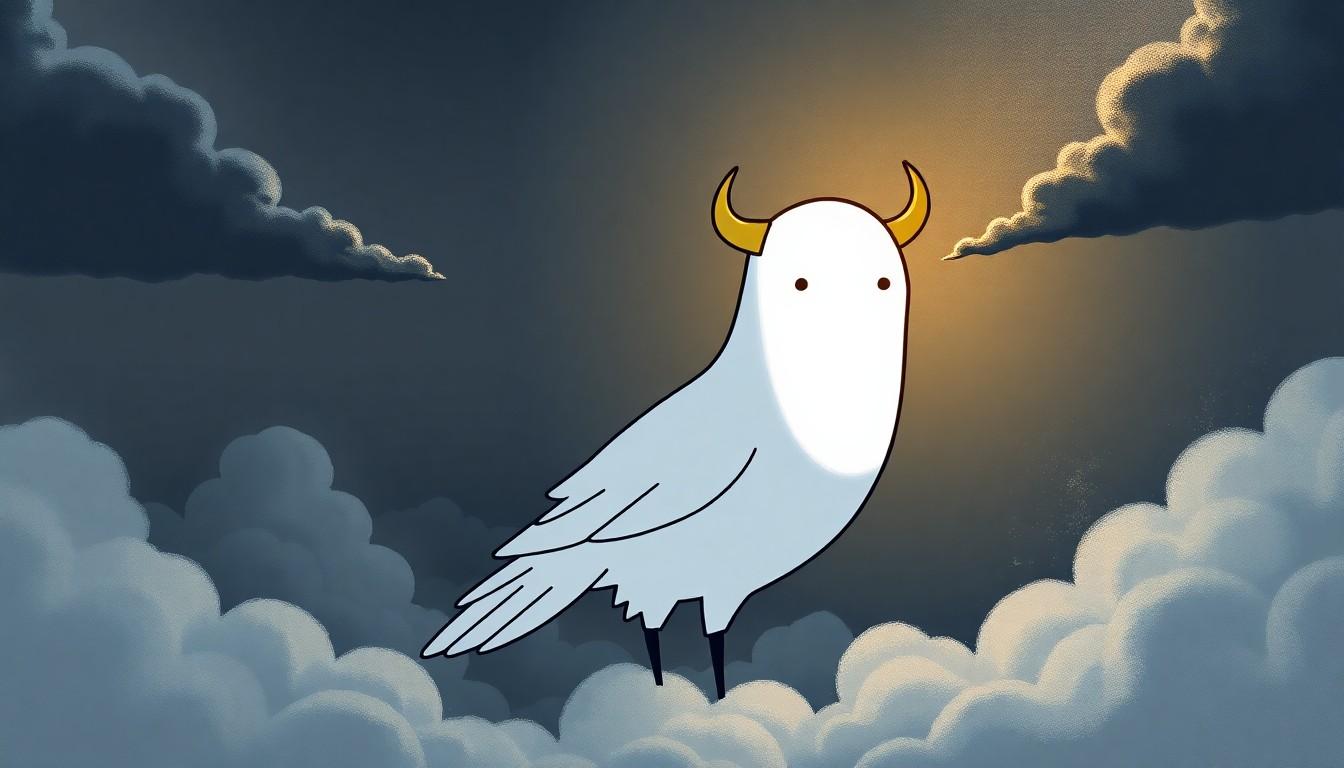
The Symbolic Meaning Behind Punpun’s Bird Face
Inio Asano deliberately created Punpun’s bird-like appearance to invite readers to project themselves into the story more effectively. This faceless, abstract design serves as a universal vessel that makes the character more relatable than a detailed human representation would. The simplistic bird form brilliantly conveys complex emotional states through subtle visual cues, with dark clouds often appearing around Punpun to symbolize his sadness while light represents moments of hope. Asano has explained that the bird form represents the characters’ inner child and their purity, which eventually contributes to their social struggles and failures. Rich symbolism permeates throughout the design choices, such as when Punpun appears with bull horns to represent his position in a love triangle with Aiko (Vega) and Sachi (Deneb), drawing parallels to the star Altair. This symbolic approach allows readers to connect with the character on a deeper level while experiencing his emotional journey through a distinctive visual language.
How Punpun’s Appearance Changes Throughout the Manga
Punpun’s visual representation evolves significantly as the narrative progresses, reflecting his psychological development and changing circumstances. Initially depicted as a simple bird, his form undergoes transformations during emotionally intense moments, sometimes shifting toward more human-like appearances that highlight the contrast between his inner industry and external reality. These transformations aren’t merely aesthetic choices but meaningful visual metaphors that symbolize exact themes or pivotal events in his life journey. As Punpun matures from childhood to adolescence, his appearance incorporates more age-appropriate details like evolving hairstyles, facial hair, and changing clothing preferences, emphasizing his transition into adulthood. The symbolic alterations, such as the aforementioned bull horns, directly connect to important relationship dynamics and emotional states he experiences throughout the story. These visual evolutions serve as a powerful storytelling device that allows readers to track Punpun’s development without relying on conventional character design techniques, creating a uniquely immersive reading experience that has distinguished “Goodnight Punpun” as an innovative work in the manga medium.
5 Ways Punpun’s Face (or Lack Thereof) Serves the Narrative
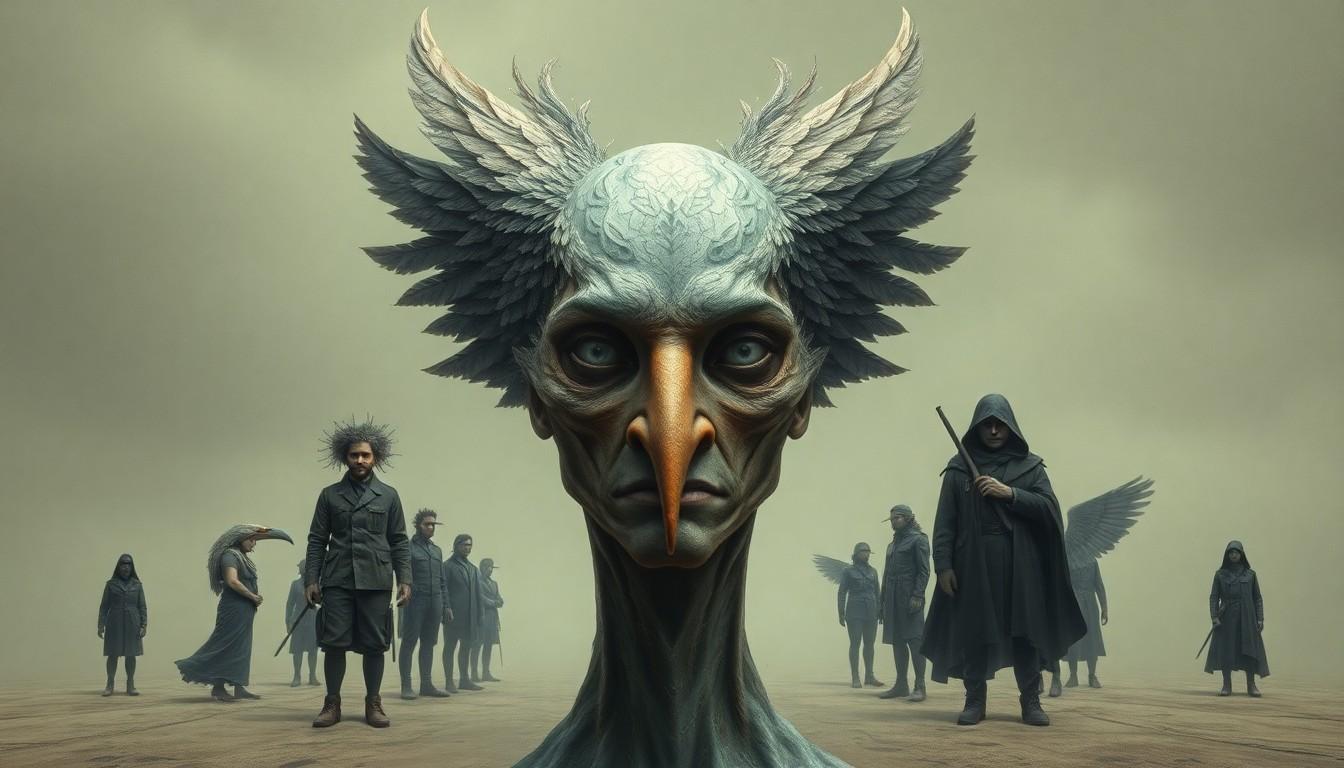
Inio Asano’s artistic choice to represent Punpun with a bird-like, featureless face is far from arbitrary. This distinctive design element serves multiple narrative purposes throughout “Oyasumi Punpun” (Goodnight Punpun).
Creating Reader Self-Projection
Punpun’s abstract bird-like face functions as a blank canvas that enables readers to project themselves into the story more effectively. Without detailed human features to distract from the emotional experience, readers can more readily identify with Punpun’s journey and internal struggles. This design choice creates an immersive connection between audience and protagonist that wouldn’t be possible with a traditionally drawn character. Many manga critics have noted how this abstraction pulls readers deeper into the narrative, as they’re forced to fill in the emotional gaps using their own experiences and interpretations.
Highlighting Emotional Disconnection
The stark contrast between Punpun’s non-human face and the realistically drawn characters around him visually represents his profound sense of alienation. His bird-like appearance emphasizes how disconnected he feels from society and those closest to him. This visual metaphor reinforces one of the manga’s central themes—the isolation experienced by individuals struggling with depression and social anxiety. Punpun’s inability to visually blend with others mirrors his emotional struggles to form meaningful connections, making his internal conflict immediately apparent without requiring explicit explanation.
Expressing Inner Turmoil Without Facial Expressions
Asano cleverly compensates for Punpun’s lack of conventional facial expressions by developing alternative methods to convey his emotional states. Body language, surrounding imagery, narrative context, and dialogue all work together to communicate what Punpun feels when his face cannot. This technique forces readers to engage more deeply with the storytelling elements, paying closer attention to subtle cues that reveal his inner industry. The absence of facial expressions paradoxically creates a richer emotional industry, as readers must actively participate in understanding Punpun’s psychological journey rather than passively receiving obvious visual signals.
Symbolizing Inner Self
Punpun’s distinctive appearance serves as a powerful representation of the character’s true inner self. Asano has suggested that the bird-like form symbolizes aspects of himself that he’s attempted to abandon but cannot fully escape. This representation highlights both the character’s and creator’s relationship with their past selves and unresolved traumas. The visual metaphor speaks to how people often carry versions of themselves they wish to leave behind but remain fundamentally connected to throughout their lives.
Facilitating Dark and Mature Themes
Punpun’s abstract design allows Asano to explore profoundly disturbing themes without alienating readers. The creator has specifically mentioned that if Punpun had been drawn with a normal human face, certain scenes might have been too graphic or emotionally overwhelming for readers to process. The bird-like representation creates necessary emotional distance that makes the manga’s exploration of depression, abuse, and existential despair more accessible. This careful balance between abstraction and realism enables “Goodnight Punpun” to tackle mature subject matter while maintaining reader engagement throughout the narrative.
How Fans Have Interpreted Punpun’s Face Through Fan Art and Theories
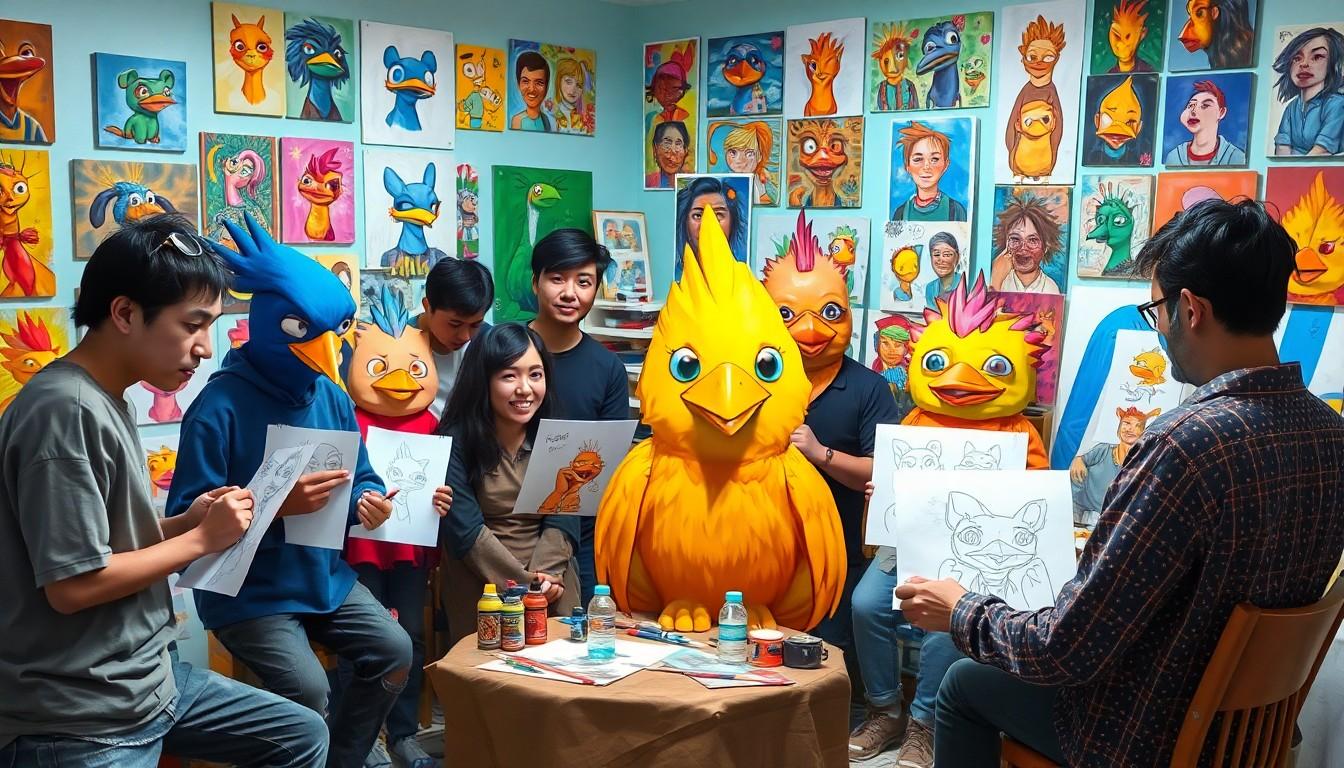
Fans of “Oyasumi Punpun” (Goodnight Punpun) have developed fascinating interpretations of the protagonist’s iconic bird form through diverse artistic expressions and analytical theories. The abstract representation has sparked creative explorations across various platforms, with fans using their artistic talents to decode the deeper meaning behind Asano’s distinctive character design.
Popular Fan Depictions of Human Punpun
Fan artists frequently reimagine Punpun in human form to explore the character’s emotional complexity that lies beneath his bird-like appearance. These humanized versions often feature expressive faces that convey the full spectrum of emotions from joy to utter disgust, providing a visual counterpoint to the original bird form. Artists create these human depictions to emphasize Punpun’s inner struggles and humanity, making his emotional journey more tangible and relatable to readers. TikTok and other social media platforms showcase vibrant edits where fans transition between Punpun’s bird form and imagined human appearance, highlighting the dramatic contrast between his symbolic representation and the human emotions he experiences. These interpretations serve to bridge the gap between the abstract character design and the very human story being told.
Creator Inio Asano’s Response to Fan Interpretations
While Asano hasn’t directly commented on fan interpretations of Punpun’s face, his artistic choices clearly invite personal connection and interpretation. The deliberate use of the bird form as a symbolic vessel appears designed to encourage readers to project their own emotions onto the character. Asano’s strategic deployment of occasional human-like features during pivotal emotional moments in the manga suggests he intended the character’s appearance to function as an artistic tool for conveying complex psychological states. His character design decisions create space for the diverse fan theories and artistic interpretations that have emerged, effectively turning Punpun into a collaborative emotional experience between creator and audience. This artistic freedom has allowed fans to develop deeply personal connections with the character, resulting in the rich variety of interpretations seen in fan communities today.
The Psychological Impact of Never Seeing Punpun’s True Face
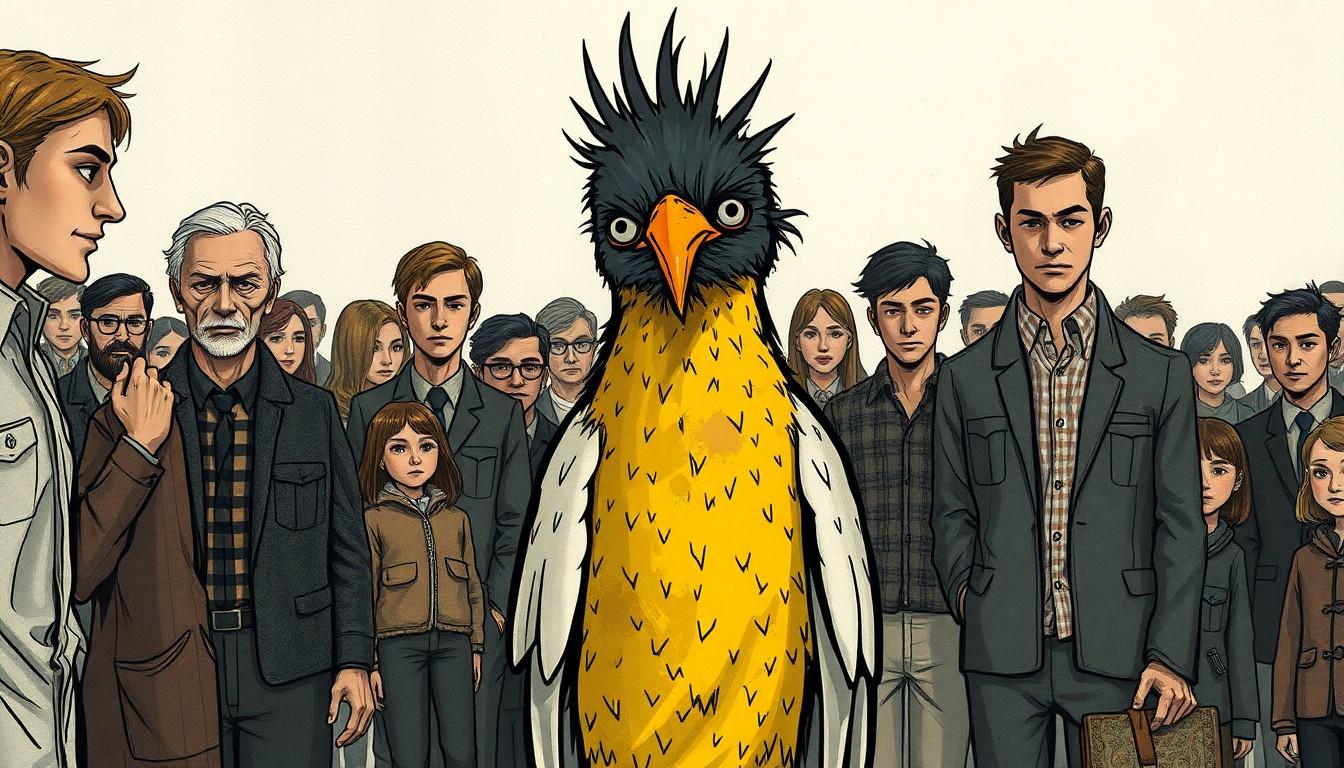
Creating Emotional Distance While Fostering Connection
Inio Asano’s decision to never reveal Punpun’s true face creates a fascinating psychological paradox for readers. By depicting Punpun as a bird-like figure among realistically drawn humans, Asano prevents us from forming a direct visual connection with the protagonist. This deliberate barrier mirrors Punpun’s own disconnection from his emotions and the industry around him. Instead of relying on facial expressions, we’re forced to focus on his actions, thoughts, and the emotional narrative, resulting in a more introspective and psychologically intense reading experience.
Amplifying the Character’s Inner Turmoil
The absence of a human face for Punpun serves as a constant visual reminder of his emotional pain and psychological struggles. His bird-like appearance underscores his internal turmoil and inability to reconcile his past and present selves. Throughout the manga, this distinctive visual representation reinforces the themes of mental health challenges, guilt, and existential crisis that Punpun faces. The stark contrast between his simplistic form and the detailed human characters emphasizes his feelings of isolation and otherness in a industry he struggles to navigate.
Enabling Deeper Psychological Exploration
Without the distraction of changing facial expressions, Asano creates space for a more profound examination of Punpun’s mental health. The bird-like face becomes a blank canvas that highlights the character’s vulnerability, innocence, and his ongoing struggle to cope with the complexities of adulthood. This artistic choice enables a more nuanced portrayal of Punpun’s relationships and existential crises, making his character development more emotionally resonant for readers. We witness his psychological evolution through his actions and thoughts rather than facial cues, creating a uniquely intimate reading experience.
Symbolizing Psychological Transformation
Punpun’s abstract appearance evolves subtly throughout the story to symbolize his changing psychological states. During moments of extreme stress or important emotional development, his bird form undergoes transformations that reflect his inner industry. These visual shifts serve as powerful metaphors for his self-destructive tendencies and his inability to forgive himself for past promises and betrayals. The transformations provide us with visual cues to track Punpun’s psychological journey without relying on conventional facial expressions to convey emotional changes.
Reflecting the Universal Struggle of Self-Identity
The bird-like face eventually represents a universal aspect of human psychology—the disconnect between how we see ourselves and how others perceive us. By never showing Punpun’s true face, Asano taps into deeper questions about identity and self-perception. This artistic choice encourages readers to project their own experiences of alienation and existential uncertainty onto the character. We’re challenged to contemplate how our own self-image might differ from reality, making Punpun’s psychological struggles feel remarkably personal even though his non-human appearance.
How Punpun’s Face Became an Iconic Symbol in Modern Manga
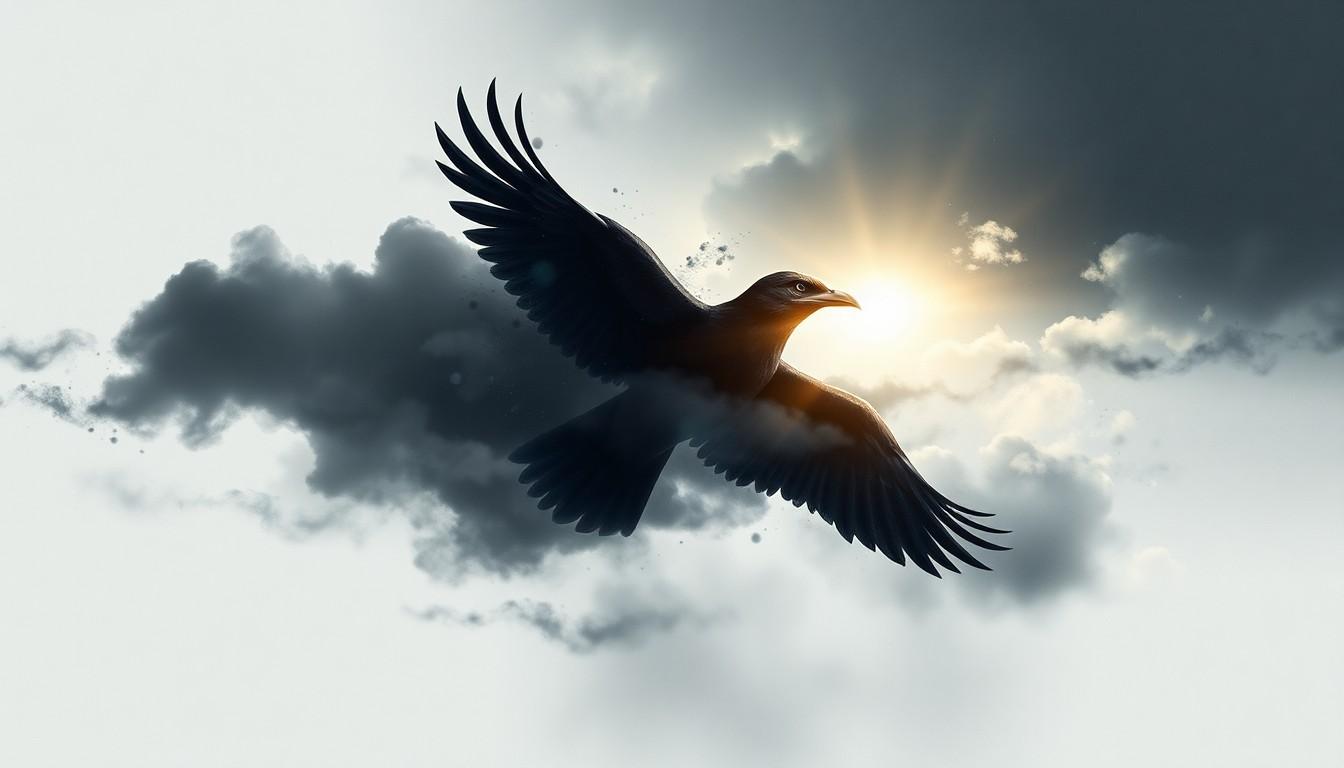
The Bird Representation as Visual Metaphor
Inio Asano’s deliberate choice to depict Punpun as a bird carries profound symbolic weight. This unique representation serves as a powerful visual metaphor for Punpun’s inner self, emotional state, and his ongoing struggles with identity and existence. Unlike traditional manga characters with detailed human features, Punpun’s bird-like appearance creates an immediate visual distinction that captures readers’ attention and curiosity. The simplistic yet expressive design allows for a universal connection that transcends typical character designs in manga.
Symbolic Language for Emotional Expression
Asano employs a rich symbolic language throughout the manga to convey Punpun’s complex emotions. Dark clouds frequently appear around Punpun to symbolize his sadness and depression, while light represents moments of hope in his journey. These visual indicators help readers understand Punpun’s emotional state without requiring traditional facial expressions. The symbolic approach creates a more nuanced emotional industry that resonates deeply with readers experiencing similar feelings of alienation or existential uncertainty.
Abstract Design as Universal Connection
Punpun’s lack of a traditional human face represents both Asano’s artistic ego and the protagonist’s inner self. This abstraction strips away the specificity of human appearance, focusing instead on the emotional and psychological aspects of the character. Readers can more easily project themselves onto Punpun’s blank visage, creating a stronger emotional connection to his experiences. The universality of his design has contributed significantly to the manga’s impact across cultural boundaries.
Fan Interpretations and Community Engagement
The enigmatic nature of Punpun’s face has sparked extensive fan engagement across various platforms. On TikTok and other social media, fans create and share diverse portraits and animations that attempt to reveal the “real” face behind the iconic character. This community participation has expanded Punpun’s cultural footprint beyond the manga itself. The collective interpretation and reinterpretation of his appearance have created a rich artistic dialogue that continues to evolve years after the manga’s conclusion.
Transformations That Mirror Psychological States
Throughout the narrative, Punpun undergoes symbolic transformations that directly reflect his psychological development. A particularly notable example occurs after reuniting with Aiko, when Punpun grows horns resembling those of an ox. This transformation symbolizes his role as Hikoboshi (the cowherd) and represents a metaphor for their love and attempted escape from societal pressures. These visual evolutions provide readers with tangible markers of Punpun’s emotional journey, making his internal struggles visually accessible even though his abstract design.
Why Punpun’s Faceless Design Continues to Captivate New Readers
Punpun’s abstract bird form stands as one of manga’s most innovative character designs ever created. It’s this deliberate artistic choice that transforms a seemingly simple story into a profound examination of the human condition.
The beauty of Punpun’s design lies in its versatility as both a narrative device and emotional mirror for readers. We’ve seen how this blank canvas invites personal interpretation while creating necessary emotional distance from the manga’s heavier themes.
What makes Punpun truly remarkable is how his evolving appearance reflects our own struggles with identity and belonging. His faceless presence continues to resonate with new generations seeking authentic emotional expression beyond conventional representations.
The enduring appeal of Punpun’s face proves that sometimes the most powerful statements come not from what we see but what we’re asked to imagine.
Frequently Asked Questions
What is the “PunPun face” and where does it come from?
The “PunPun face” is an iconic symbol in internet culture that expresses complex emotions like existential dread. It originates from Inio Asano’s manga “Goodnight Punpun,” where the main character is depicted with a simple, bird-like appearance while other characters are drawn realistically. This distinctive design has gained popularity as a versatile reaction image on social media platforms.
Why did Asano choose to represent Punpun as a bird?
Asano deliberately chose the bird-like design to create a blank canvas for readers to project their own emotions onto Punpun. This abstract representation allows for a more universal connection to the character while symbolizing his feelings of being an outsider. The design reflects Punpun’s inner child and purity, contributing to his social struggles.
How does Punpun’s appearance change throughout the manga?
Punpun’s bird form evolves subtly throughout the story to symbolize his psychological states and development. During emotionally intense moments, he shifts toward more human-like features. He also transforms in ways that reflect his circumstances, such as growing horns after reuniting with Aiko. These visual changes serve as meaningful metaphors tracking his growth from childhood to adulthood.
What narrative functions does Punpun’s design serve?
Punpun’s design serves five key functions: providing a blank canvas for reader self-projection, highlighting his emotional disconnection through contrast with realistic characters, encouraging active reader engagement through alternative emotional cues, symbolizing his true inner self, and creating emotional distance that makes the manga’s dark themes more accessible.
How have fans interpreted Punpun’s face?
Fans have created diverse interpretations of Punpun through fan art and theories across various platforms. Many reimagine him in human form to highlight the emotional complexity beneath his bird-like appearance. These creative explorations bridge the gap between the abstract character design and the human story being told, fostering a rich community of interpretations that enhance the character’s impact.
What is the psychological impact of never seeing Punpun’s true face?
Never seeing Punpun’s true face creates a paradox that fosters introspection and emotional distance. This mirrors his disconnection from his emotions and emphasizes his internal struggles. The absence of a human face serves as a constant reminder of his emotional pain while reinforcing themes of isolation. This artistic choice reflects universal questions about identity, making his struggles feel remarkably personal.
How does the PunPun face function as an internet meme?
The PunPun face has become a popular internet meme because it effectively expresses complex emotions that traditional emojis cannot capture. Its simple yet expressive design makes it a versatile reaction image on social media, particularly for conveying existential dread, contemplation, and nuanced feelings. This has expanded its cultural influence beyond the original manga readership.
What symbolic language does Asano use with Punpun’s design?
Asano employs rich symbolic visual language to convey Punpun’s emotions without traditional facial expressions. Dark clouds appearing around Punpun symbolize sadness and depression, while light represents hope. Physical transformations like horns symbolize love and societal pressures. These visual indicators provide readers with tangible markers of Punpun’s emotional journey.

